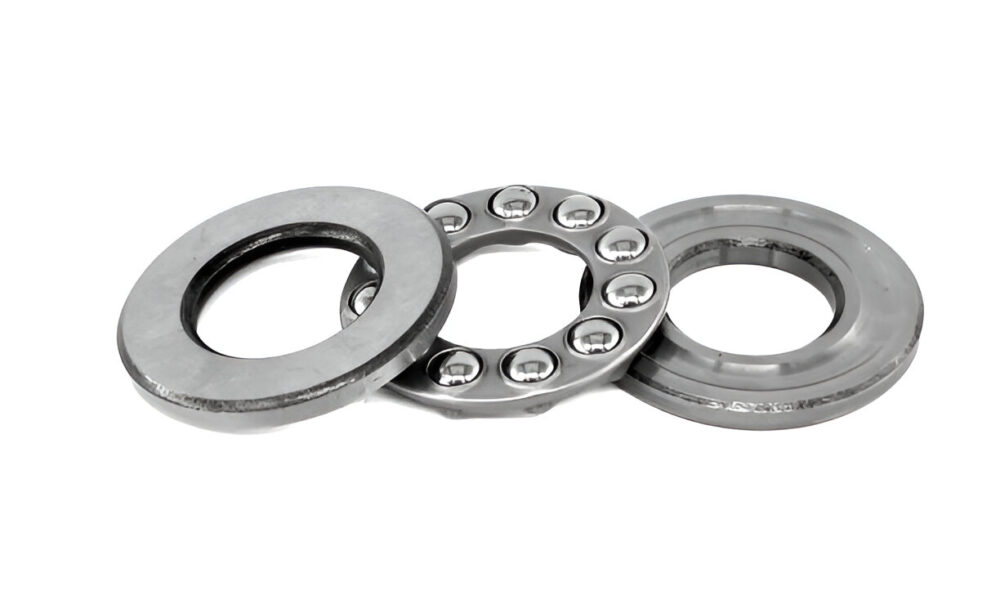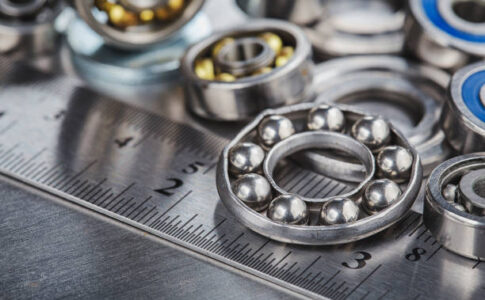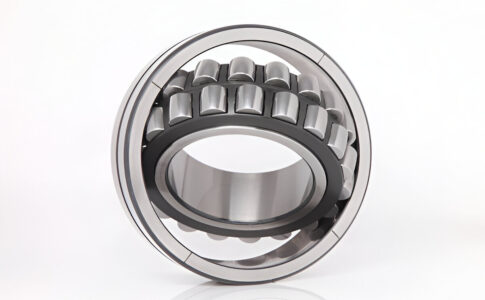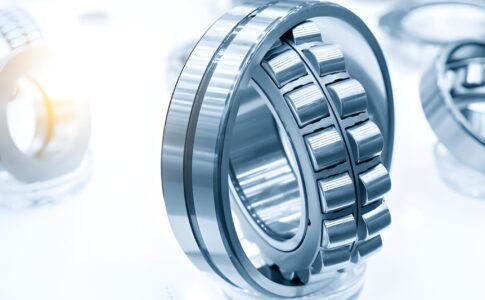In industrial machinery, performance and precision go hand in hand. Every rotating part must operate under load, often at high speed, and for long hours — all without failure. One essential component that helps achieve this reliability is the
thrust bearing.
Although small in size, thrust bearings play a significant role in absorbing axial force and ensuring the stability of motion systems.
From heavy-duty gearboxes to high-speed turbines, thrust bearings are critical for supporting axial loads and maintaining consistent machine performance.
Understanding the Function of Thrust Bearings
Unlike radial bearings, which are designed to support forces that act perpendicular to the shaft, thrust bearings handle axial loads — forces that run parallel to the shaft.
These bearings are often used in assemblies where rotating parts are subjected to strong linear pressure, such as in pumps, automotive systems, or large-scale industrial machines.
They allow for smooth rotation while withstanding pressure that could otherwise damage the shaft or disrupt alignment.
Key Types of Thrust Bearings
Several types of thrust bearings are used in mechanical systems depending on the operating conditions:
- Ball Thrust Bearings: Commonly used in light-load applications, such as automotive steering and low-speed machinery. These bearings contain ball elements arranged between two washers and perform best at lower axial loads.
- Roller Thrust Bearings: These bearings use cylindrical or tapered rollers and can handle much heavier axial loads. They’re found in heavy industrial equipment like construction machines, presses, and marine drives.
- Fluid Thrust Bearings: Instead of solid rolling elements, these bearings use a film of lubricant to create a low-friction surface. They’re ideal for high-speed, high-precision environments such as turbines and compressors.
- Magnetic Thrust Bearings: Advanced bearings that use magnetic fields to suspend the shaft, completely eliminating physical contact. They offer almost zero friction and are used in applications like MRI machines and aerospace technology.
How Thrust Bearings Support Heavy Loads
Thrust bearings play a vital role in systems that experience constant or sudden axial pressure. Here’s how they manage that:
- Load Distribution: Thrust bearings evenly distribute the axial force across the bearing surface, reducing wear on the shaft and housing.
- Friction Reduction: By minimizing metal-to-metal contact, they reduce heat generation and improve system efficiency.
- Shock Absorption: In dynamic systems, such as engines or gearboxes, thrust bearings can absorb vibrations and sudden impacts, helping to protect other components.
- Alignment Support: Some thrust bearing designs allow for minor misalignments in the shaft, helping to maintain proper rotation even under imperfect conditions.
These features help machinery operate longer and with fewer breakdowns — making them a smart investment for any industrial setting.
Real-World Applications
Thrust bearings are used in a wide range of machines and systems, including:
- Automotive gear systems
- Hydraulic pumps and compressors
- Heavy-duty cranes and hoists
- Marine engines and propeller shafts
- Industrial fans and blowers
In each of these applications, the thrust bearing’s ability to manage axial loads is crucial for consistent, reliable operation.
Why Quality Matters
Not all thrust bearings are created equal. Low-quality or counterfeit bearings may wear out quickly, leading to equipment failure and unplanned maintenance.
That’s why it’s essential to choose trusted brands and reliable suppliers.
At Noormsons, we understand the importance of quality in every component. Our selection of high-performance thrust bearings is designed to meet the demands of modern industries — from agriculture and construction to power and processing plants.
Maintenance Tips to Extend Bearing Life
Even the most durable thrust bearing requires proper care. Here are a few tips to get the most out of your bearings:
- Use proper lubrication: Use the manufacturer-recommended oil or grease and check levels regularly.
- Keep them clean: Dust and debris can lead to wear and overheating. Use seals where needed.
- Monitor performance: Listen for unusual noise or vibration and inspect bearings during routine maintenance.
- Avoid overload: Choose the correct bearing type and size based on actual load requirements.
Regular maintenance can dramatically improve the life of your thrust bearings — and your machinery.
Final Thoughts
The role of the thrust bearing in any mechanical system is simple yet powerful. By supporting heavy axial loads and reducing friction, these small components enable smooth motion and long-term machine performance.
Whether you’re looking to replace worn bearings or upgrade to higher-quality options, trust
Noormsons
to provide reliable solutions that meet your operational needs.
Let your machines run longer, smoother, and more efficiently — all with the right thrust bearing in place.






No comments